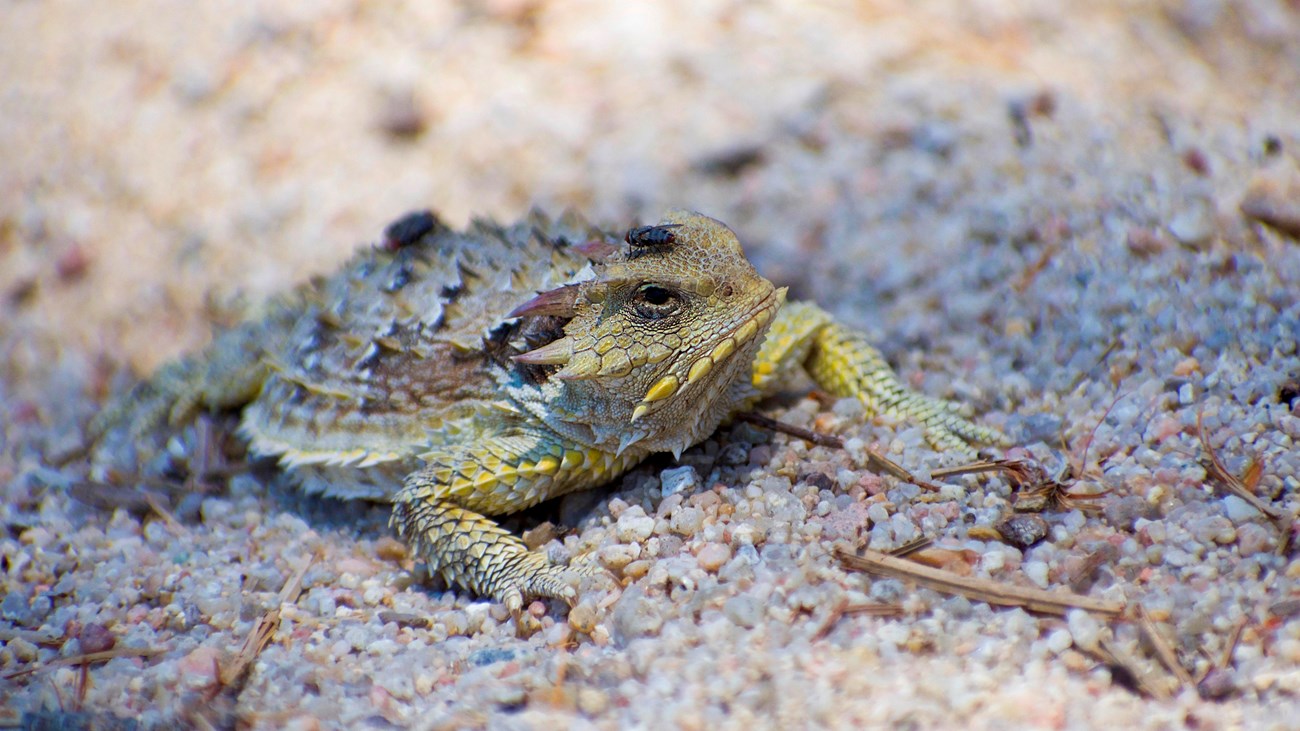Last updated: August 1, 2024
Thing to Do
Wildlife viewing in Pinnacles National Park

NPS Photo
Rocky cliffs, chaparral, native grasslands, and oak savannas harbor a remarkable collection of life. Talus caves shelter Townsend's big-eared bats, while 13 other bat species roost in rock crevices and trees. The park is home to 30 species of reptiles and amphibians. With over 500 species of bees, the park has some of the highest bee diversity known anywhere on Earth. Endangered California Condors, once down to 27 individuals, soar again over the High Peaks. The park is within their historic home range - Amah Mutsun stories tell how the wasaka (condor) escorted spirits of deceased relatives to the next world across the sea. Pinnacles is one of six release sites for captive-bred birds. Today North America's largest land bird nests here. Condor numbers are increasing, but they are not out of danger yet.
For more information and resources about wildlife found in Pinnacles National Park check the park website.
Recreate Responsibly. Check park webpage alerts and weather forecast. Hiking, caving, and climbing can be fun but remember-if you get injured, you are a long way from medical help. Cell phones may not work in this remote park. Don't let your guard down when it comes to safety. Be prepared. Let someone know your plan before you go. Most of the trails are exposed. Bring a map and use the best judgement of your abilities. Drinking water is only available in developed areas-there is no water along any of the trails. Carry at least a liter of water for every hour of hiking. In winter, wear warm clothes and waterproof clothing. In summer, do not hike during the hottest parts of the day (10AM-4PM) especially on strenuous trails. Heat and dehydration can be fatal. Hiking steep trails requires more energy and results in greater water loss through sweating. Wear lightweight, light-colored, loose-fitting clothing. Wear sunscreen, a hat, and sunglasses. Wear sturdy, non-slip shoes or boots with ankle support due to rocky, uneven terrain and slick and sometimes slippery rocks. In all seasons, carry plenty of water and salty snacks (ex. pretzels, crackers, chips). Stay hydrated with plain water and an electrolyte drink replacement. Stay cool in summer and warm in winter and take rest breaks. Know your limits and turn back if needed. Stay on established trails to help prevent erosion. Wildflowers, pine cones, rocks, and other natural and cultural features are beautiful, but please do not remove or destroy them;leave them for the enjoyment of other visitors. All plants, animals, rocks, and structures in the park are protected by federal law. Be careful where you sit, step, and place your hands: poison oak, stinging nettle, and rattlesnakes are found here. Feeding, approaching, or hunting wildlife is prohibited. Using remotely piloted aircrafts like drones is prohibited.
Plan ahead and prepare. Take only pictures and leave only footprints, leaving objects as you find them. Observe wildlife from a distance and avoid loud voices or noises to be considerate of others.
Pets must be on a leash and not left unattended and tied to an object in the park.
*Birdwatching and any wildlife viewing is best without the presence of pets.
*Binoculars and/or camera is recommended.
